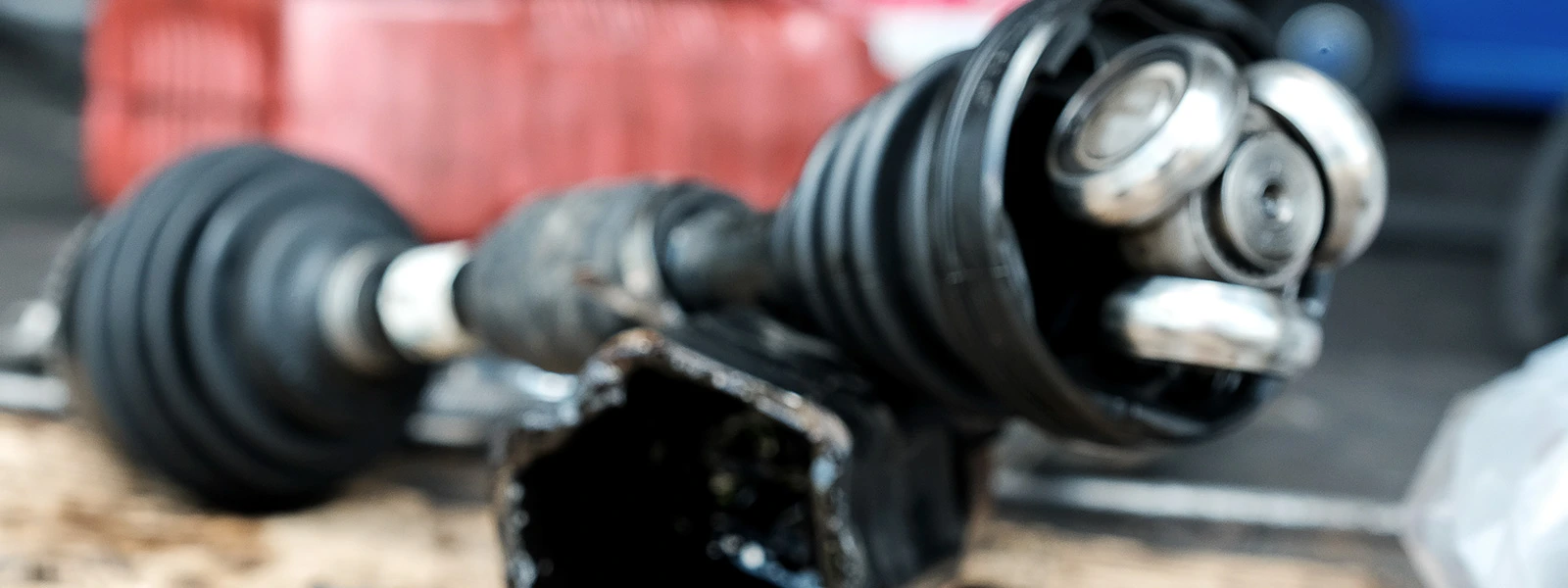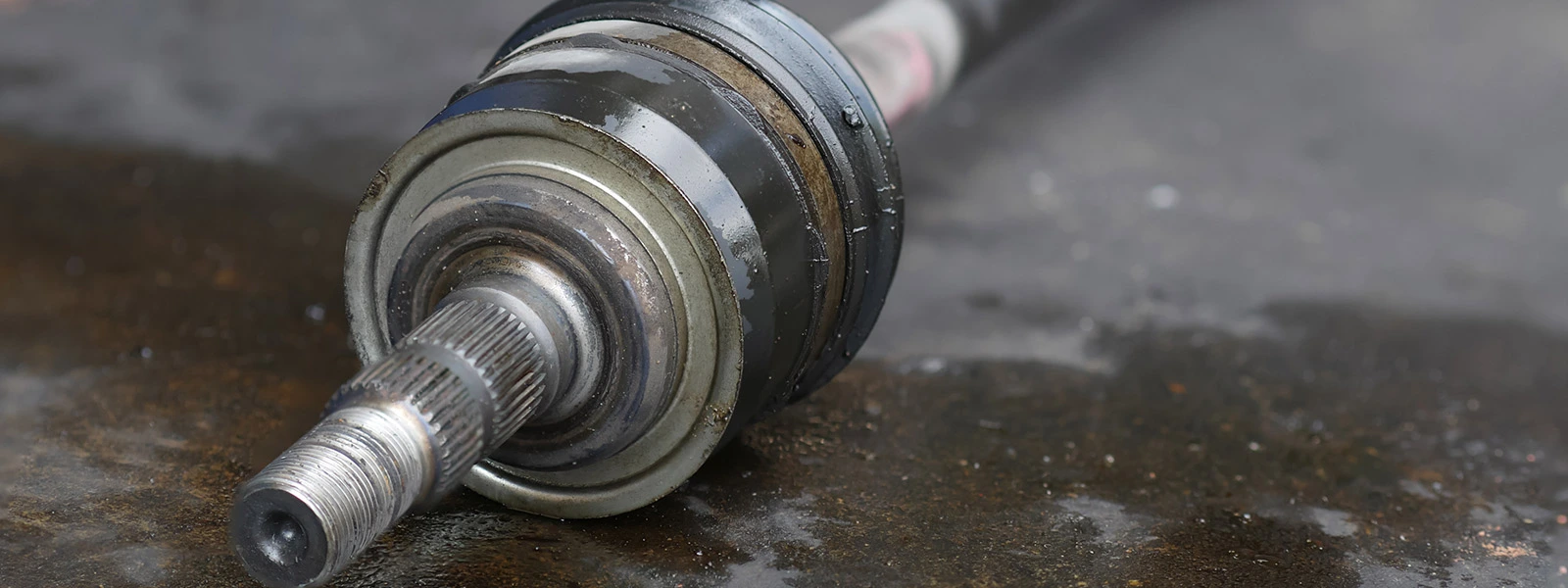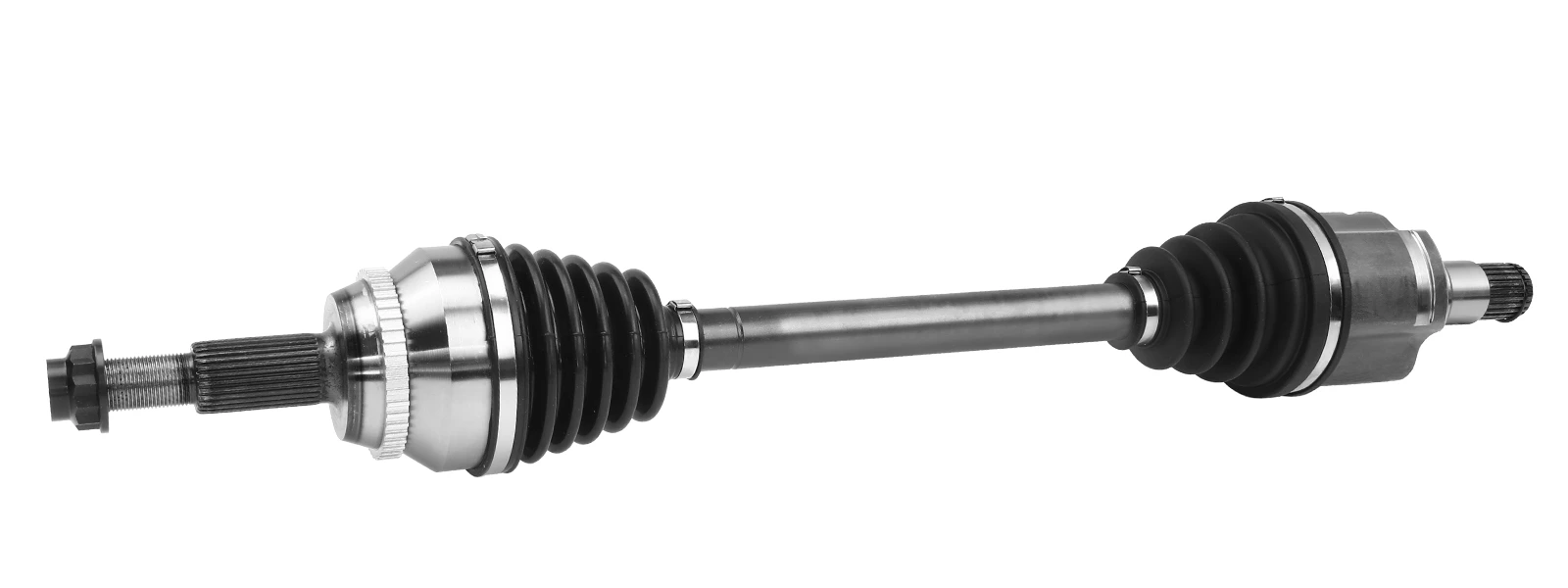Signs Of A Bad CV Axle Shaft

Experiencing unusual sounds or vibrations during acceleration? It may be a sign of a bad CV axle shaft. Learn how to diagnose and address these issues with this guide.
CV axle shafts, or halfshaft, play an essential role in the drivetrain of a vehicle. They are responsible for transferring power from the transmission or differential to the wheels while also allowing for the suspension system's movement. The CV joint on the end of the axle shaft allows for flexibility in the joint as the wheel moves up and down during driving.

Why CV axle is important?
CV shaft is important for a car due to its functions. It is responsible for transmitting torque from the engine to the wheels without interruption, even when the wheels are turning at different speeds, such as during cornering or uneven terrain.
A CV axle is designed with a flexible joint or CV joint that allows it to flex and bend as the wheels move up and down, side to side, and back and forth. This flexibility is crucial in maintaining traction and stability, particularly when driving on uneven surfaces, making turns or navigating hills. It is also important for vehicle safety because it is designed to prevent the wheels from locking up or losing traction during braking, acceleration, and cornering. It helps the vehicle maintain directional stability, preventing it from skidding or sliding out of control.
What happens when CV axle shaft goes out?
The front section of your vehicle is an impressive feat of engineering, with multiple intricate systems working together in close proximity. One of the most remarkable achievements is the transmission of energy from the engine and transmission to the wheels, which is accomplished using the constant velocity (CV) axle, in front-wheel drive vehicles and others. It is a critical component since it transfers power to the wheels, making a damaged CV axle a significant problem. There are five simple methods to detect a damaged CV axle.
- Increased vibration while driving. Due to their proximity to the wheels, any issues with the CV Axle joints can have a direct impact on your driving experience. If you notice an increase in vibration while driving, it could indicate damage to the halfshaft. However, it's crucial to note that there could be other causes of excessive vibrations, so it's important to watch out for additional indicators of a damaged CV Axle.
- Clickingsound while turning. The halfshaft is responsible for providing power to the wheels and allowing them to turn. To protect the joint that facilitates wheel rotation, the CV Axle Joint is equipped with a rubber boot. If this boot is damaged, it can negatively affect your ability to turn. If you hear loud clicking sounds while turning, whether in one direction or all directions, it could suggest a damaged CV joint. However, there could be other causes of clicking sounds, so it's important not to jump to conclusions and instead seek professional assistance for an official diagnosis of the issue.
- Knocking noise. If you hear a knocking sound while driving, it could be due to a problem with your CV axle. While it's possible that the knocking could be caused by something else, sudden knocking is rarely a minor issue. Therefore, it's best to have a professional examine the problem as soon as possible. If you're experiencing this issue, you can contact our team at Capitol Toyota to schedule an appointment for an inspection.
- Grease on the wheel or undercarriage. If the boot of your CV Axle is damaged, the heavily-lubricated grease can leak out and be found on the inside of your wheels. While it may not be as easily noticeable as a knocking sound, finding grease on your wheels can confirm suspicions of a damaged halfshaft. However, if no grease is found on the inside of your tire, there may be a different issue that needs to be addressed. It's important to check for this indicator if you suspect a damaged CV boot.

- BustedBoot. It is easy to identify a torn CV boot, which is not the case with other symptoms that can have various causes. If multiple signs suggest a damaged CV axle, the best way to confirm it is by inspecting the axle. To do this, you can crawl under the vehicle and check the CV axles that connect to the wheels or schedule an appointment with Capitol Toyota to have a professional look at it. If a torn rubber boot is found, it should be replaced promptly to prevent further damage to the joint from running without grease. In most cases, replacing the boot is sufficient, but if left unaddressed, it may require replacing the entire CV axle.
Driving a car with a damaged CV joint can cause further deterioration and eventually make it impossible to drive. This increases the risk of accidents, which is why you are suggested to avoid driving a vehicle with faulty CV joints. So If your CV axle shaft is broken, it is important to get it checked and repaired by someone professional as soon as possible. Get prepared for the CV axle replacement when necessary.
A worn or damaged CV axle can cause a variety of issues that may affect the performance and safety of a vehicle. To ensure a safe and comfortable ride, you need to conduct regular maintenance and inspection to prevent these problems. If any damage or wear is detected, you are always advised to have it inspected or repaired by someone professional ASAP.

